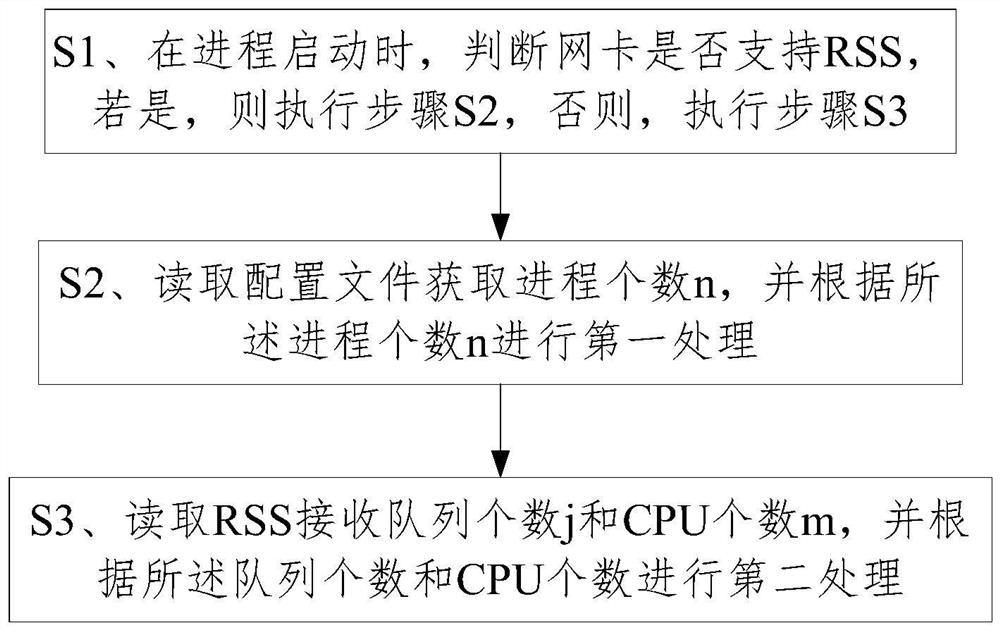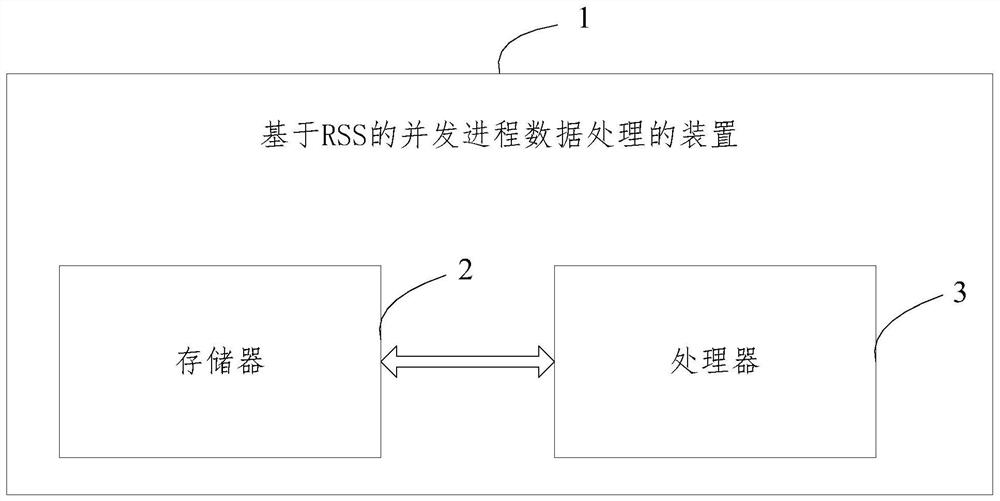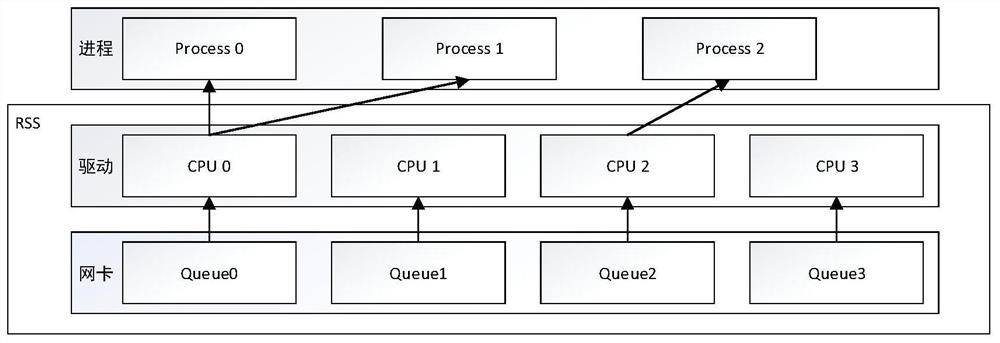RSS-based concurrent process data processing method
A process data and process technology, applied in the computer field, can solve problems such as process failure, process processing efficiency reduction, message processing efficiency reduction, etc.
- Summary
- Abstract
- Description
- Claims
- Application Information
AI Technical Summary
Problems solved by technology
Method used
Image
Examples
Embodiment 1
[0031] Please refer to figure 1 , a method for RSS-based concurrent process data processing, comprising steps:
[0032] S1. When the process is started, it is judged whether the network card supports RSS, if so, then execute step S2, otherwise, execute step S3;
[0033] S2. Read the configuration file to obtain the number n of processes, and perform the first processing according to the number n of processes;
[0034] The first treatment is specifically:
[0035] Fork the process into n-1 child processes.
[0036] S3. Read the number j of RSS receiving queues and the number m of CPUs, and perform a second process according to the number of queues and the number of CPUs.
[0037] The second processing is specifically:
[0038] Determine whether the number of CPUs m is greater than or equal to j, if so, fork the process into j-1 child processes, and bind the process to the CPU ID, otherwise, set the number of RSS receiving queues to m, and The above process forks out m-1 c...
Embodiment 2
[0041] Please refer to figure 2 , a device 1 for RSS-based concurrent process data processing, comprising a memory 2, a processor 3 and a computer program stored on the memory 2 and operable on the processor 3, the processor 3 implements the program when executing the program Each step in the first embodiment.
PUM
 Login to View More
Login to View More Abstract
Description
Claims
Application Information
 Login to View More
Login to View More - R&D
- Intellectual Property
- Life Sciences
- Materials
- Tech Scout
- Unparalleled Data Quality
- Higher Quality Content
- 60% Fewer Hallucinations
Browse by: Latest US Patents, China's latest patents, Technical Efficacy Thesaurus, Application Domain, Technology Topic, Popular Technical Reports.
© 2025 PatSnap. All rights reserved.Legal|Privacy policy|Modern Slavery Act Transparency Statement|Sitemap|About US| Contact US: help@patsnap.com



